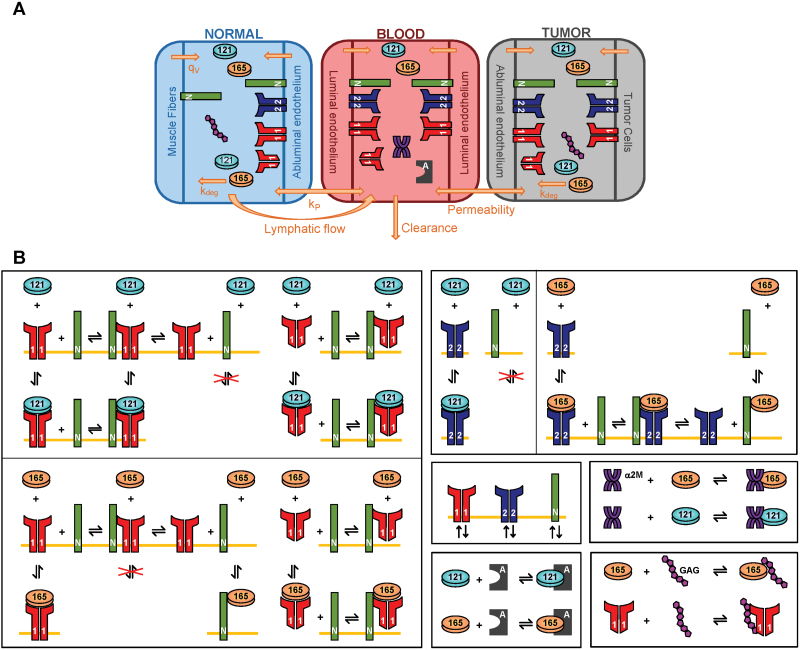Figure 1.
Molecular-detailed compartmental model of vascular endothelial growth factor (VEGF) kinetics and transport in the body. A) The model includes three compartments: normal tissue, blood, and tumor tissue. VEGF is secreted by muscle fibers and tumor cells in the normal tissue and tumor, respectively (qv). VEGF receptors are localized on the luminal and abluminal endothelial surfaces and tumor cells. Only neuropilin 1 (NRP1) is present on muscle fibers. Free and ligand-bound receptors can be internalized (kint). Transport between compartments occurs by transendothelial permeability (kp) and lymph flow (kL). VEGF is also cleared from the blood (cv). B) VEGF165 binds to VEGF receptor 1 (VEGFR1), VEGF receptor 2 (VEGFR2), and coreceptors NRP1 and neuropilin 2 (NRP2), as well as glycosaminoglycan (GAG) chains in the extracellular matrix and basement membranes. VEGF121 binds to VEGFR1 and VEGFR2, but does not bind NRPs. Binding between VEGF and NRP1 or NRP2 follow the same reactions but is governed by different kinetic parameters. Receptors and coreceptors are internalized at the cell surface. The anti-VEGF agent binds to both isoforms.

